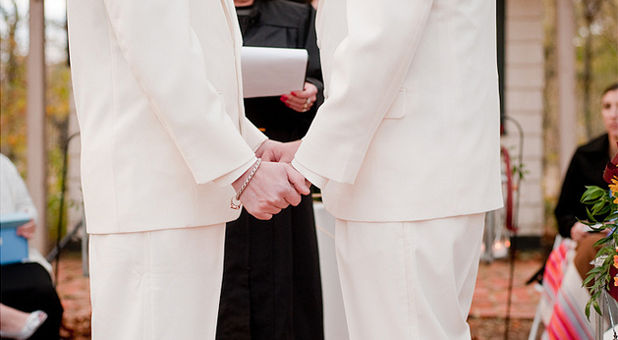Why State Gay Marriage Rights May Not Matter Anymore
For the second time in two months, a Cincinnati federal judge granted an order allowing the out-of-state marriage of a gay couple to be recognized in Ohio even though the state bans same-sex marriages.
U.S. District Judge Timothy Black on Tuesday issued a temporary restraining order allowing David Michener of Cincinnati to be listed as “spouse” on the death certificate of his husband, William Herbert Ives, who died last week. The couple was married in Delaware this past summer.
In July, Judge Black had granted a temporary order allowing James Obergefell the right to be listed as “spouse” on John Arthur’s death certificate after Obergefell and Arthur were married in Maryland.
Arthur suffers from amyotrophic lateral sclerosis (ALS), a terminal disease and is not expected to live long, according to court documents. Obergefell had sued the state, challenging as unconstitutional a law defining marriage as being only between a man and a woman.
The rulings by Black represent a victory for same-sex couples in a state where voters in 2004 restricted marriage to between a man and a woman. Thirteen states and the District of Columbia allow gay and lesbian marriage.
In making his ruling on Tuesday, Black cited the U.S. Supreme Court’s June decision striking down a key part of the 1996 federal Defense of Marriage Act that defines marriage as between a man and a woman.
“The issue whether states can refuse to recognize out-of-state same sex marriages is now surely headed to the fore,” Black wrote.
Michener and Ives, the Cincinnati couple, had been together for 18 years and adopted three children before they were married in Delaware on July 22, according to court documents. Ives died unexpectedly on Aug. 27 and is scheduled to be cremated on Wednesday.
Oral arguments in the case are schedule to be heard in December.
Views on gay marriage in Ohio are changing rapidly, especially among the young. An April 2013 Quinnipiac University poll showed that 48 percent of Ohio voters—and 68 percent of those between the ages 18 and 34—supported same-sex marriage.
An Ohio group, Freedom to Marry, announced in April a plan to bring an amendment allowing two individuals to marry regardless of gender to the Ohio ballot in 2014.














































